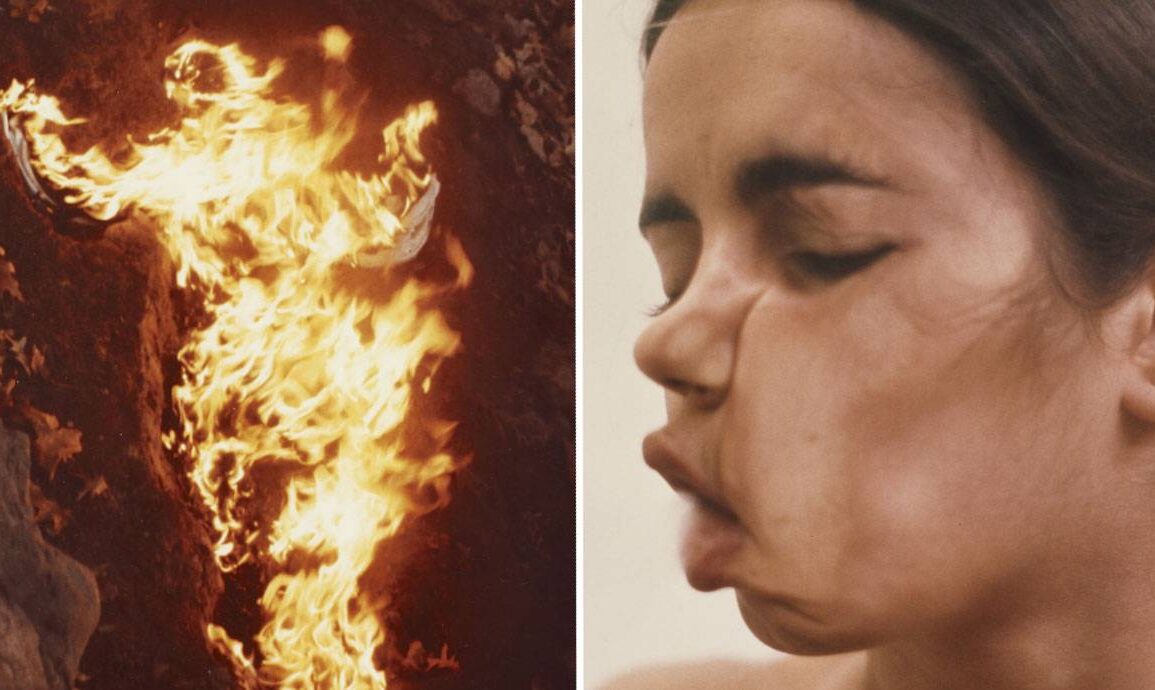
Born in Cuba, Ana Mendieta moved to the US as a political refugee when she was 12 years old. Mendieta began studying art while living in an orphanage and in foster homes. When she was a graduate student she made her Silueta series connecting the earth and the environment with the body and the feminine. She died at 37 under troubling circumstances. Because of this her husband, Carl Andre, was arrested on suspicion of murder.
Ana Mendieta’s Early Life and Education
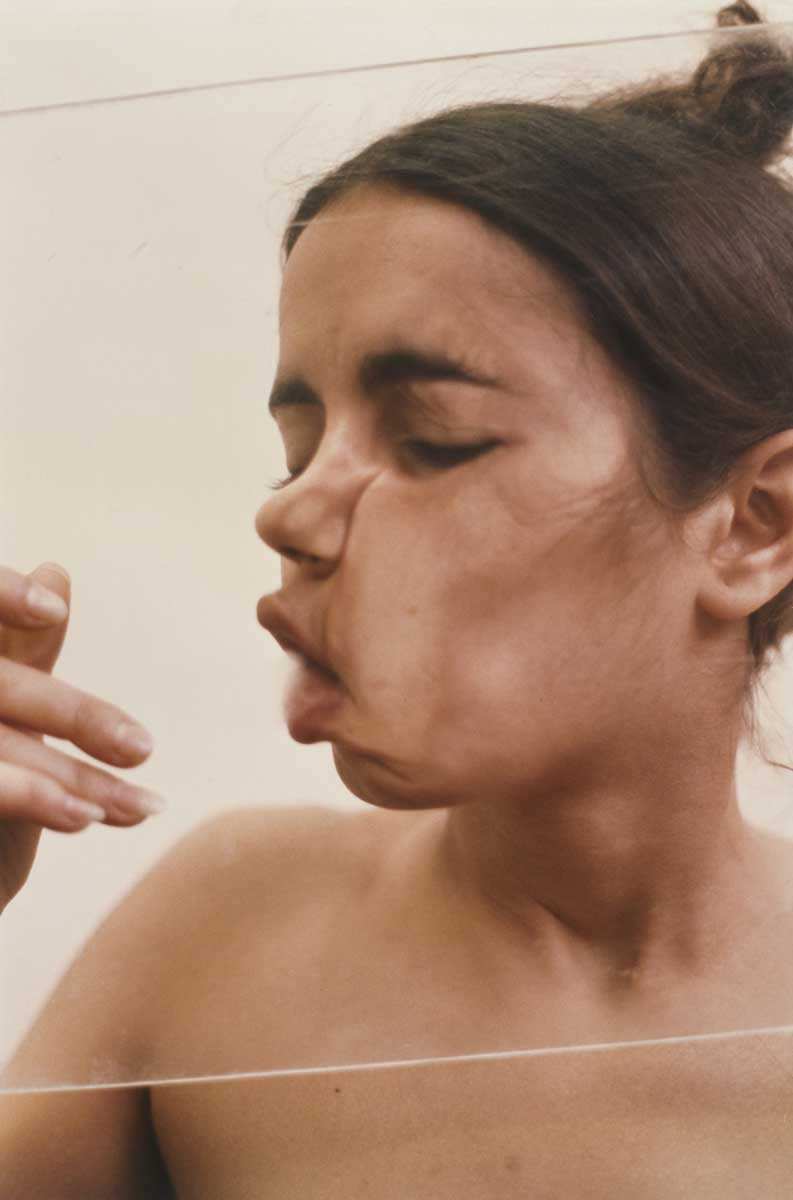
Ana Mendieta was born in Cuba in 1948 to an upper-middle-class family. Her father initially supported Fidel Castro’s revolution, but he ended up joining the anti-Castro counter-revolutionary forces when Mendieta was still a child. Fearing for her and her sister’s lives, her family sent them to Miami through Operation Pedro Pan, a U.S. government asylum program for Cuban adolescents. She was placed in an orphanage in Dubuque, Iowa, separated from her sister, and moved from one foster home to another.
This difficult childhood left Mendieta strong-willed and determined. In 1966, she started studying art at the University of Iowa. That same year her mother and younger brother emigrated to the U.S. Her father was in jail at the time, arrested for his involvement in the Bay of the Pigs invasion. He would spend 18 years in prison, joining his family in 1979.
After graduating, Mendieta pursued an MFA degree in Intermedia art organized by Hans Breder, who became her mentor and lover for over a decade. Breder introduced her to conceptual art and the idea of documenting all her work. Interestingly, while blending feminist and environmental art in her performances, Mendieta performed her works without witnesses. Instead, it was the documentation of the performance that was exhibited, through photographs and videos. An example of this is the Untitled (Glass on Body Imprints) series where the artist distorts her naked body by pressing it against a glass panel.
Ana Mendieta’s Early Feminist Works
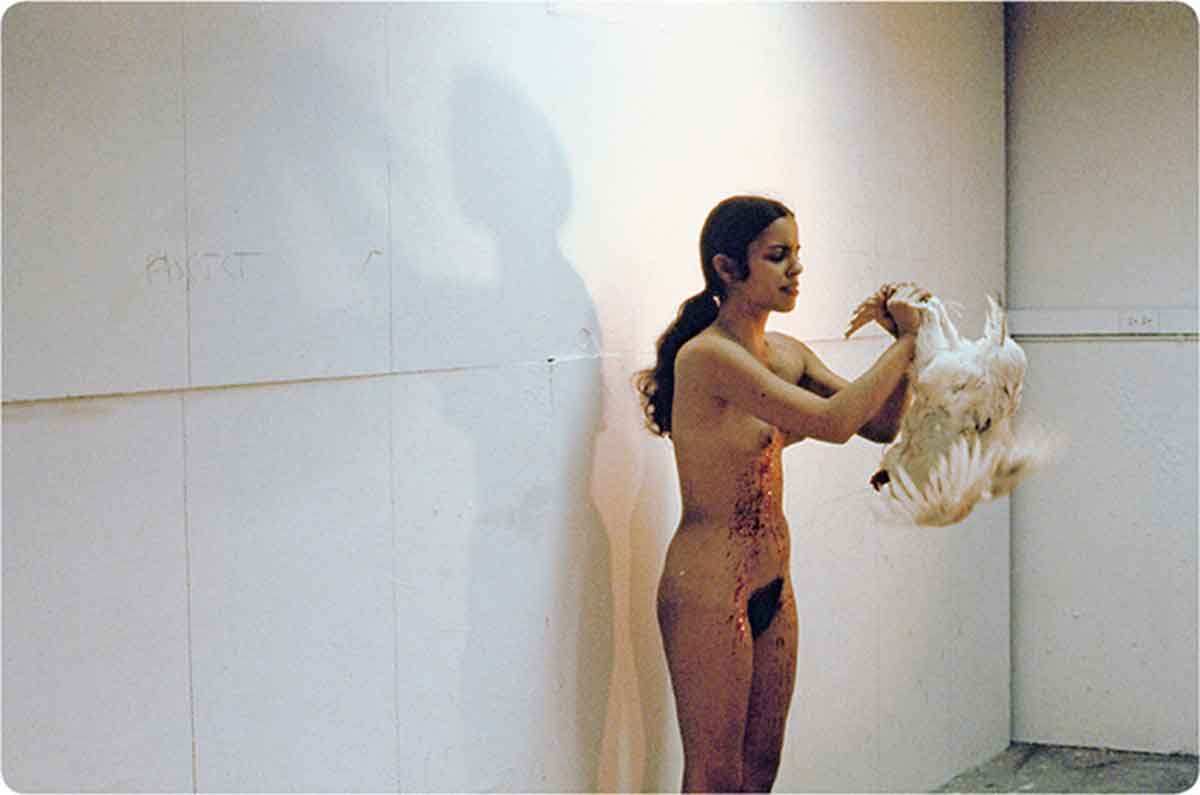
Get the latest articles delivered to your inbox
Sign up to our Free Weekly Newsletter
A lot of Mendieta’s earliest works are feminist art pieces. These are primarily concerned with violence against women. Early works from this period include Death of a Chicken and Chicken Movie, Chicken Piece from 1972. These video pieces show the naked artist holding a headless chicken. The chicken’s death spasms make the blood splutter erratically falling onto its white feathers and Mendieta’s naked body. A very emotional work, it reformulates the use of blood, womanhood, and Latin American animal sacrifices. It also implies a natural connection between herself as a woman and nature.
Another famous video work is the 1974 Untitled (Body Tracks). Here, the artist faces the wall with her hands raised and slides to the ground. As her hands are covered in red paint, her movement leaves a trace of red. She stands up, speaks to the camera, and then leaves the room. It is her body that is in charge of the action, reclaiming space and power with the feminine. Many feminist performance artists have used red paint in reference to the feminine.
The Silueta Series
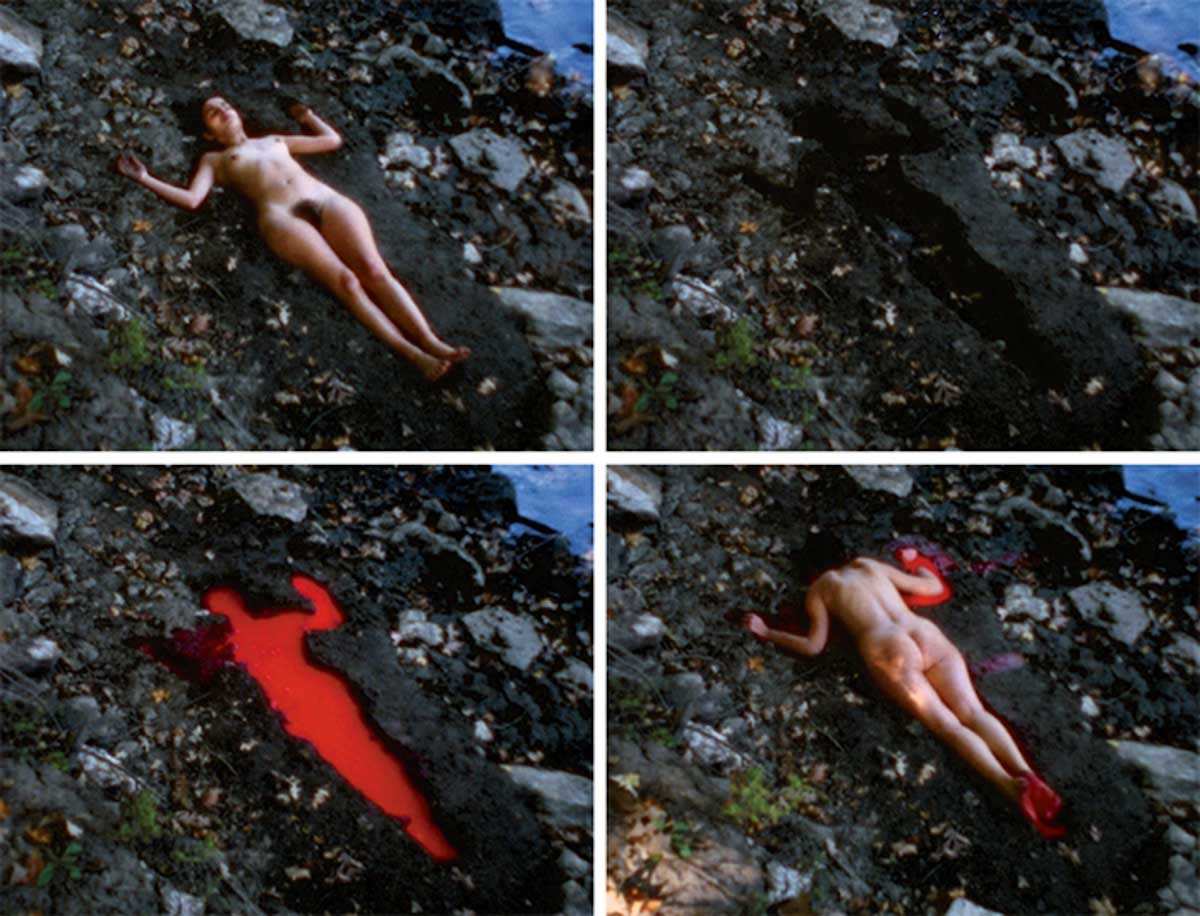
Mendieta’s most famous work is the Silueta series (1973-1980). It is also a pioneering work of land art, a movement that flourished during the 1970s. For the series, the artist developed a unique visual language that engaged both feminist and environmental ideas. This is why she is known as an ecofeminist artist. The pieces include silhouettes made using the artist’s body in the natural environment. Mendieta called these earth-body imprints.
In her piece Untitled from 1978, the darkened shape in the sand shows where the artist’s body has been. The silhouette refers to her absence from her homeland Cuba and metaphorically from Earth, giving an unsettling feeling. Another famous example is Imagen de Yagul (Image from Yagul) from 1973. Here, Mendieta lies naked in a pre-Hispanic tomb at Yasul, a Mesoamerican ancient site. In the photograph, she is covered in white flowers.
Ecofeminism: Connecting the Body with the Universe
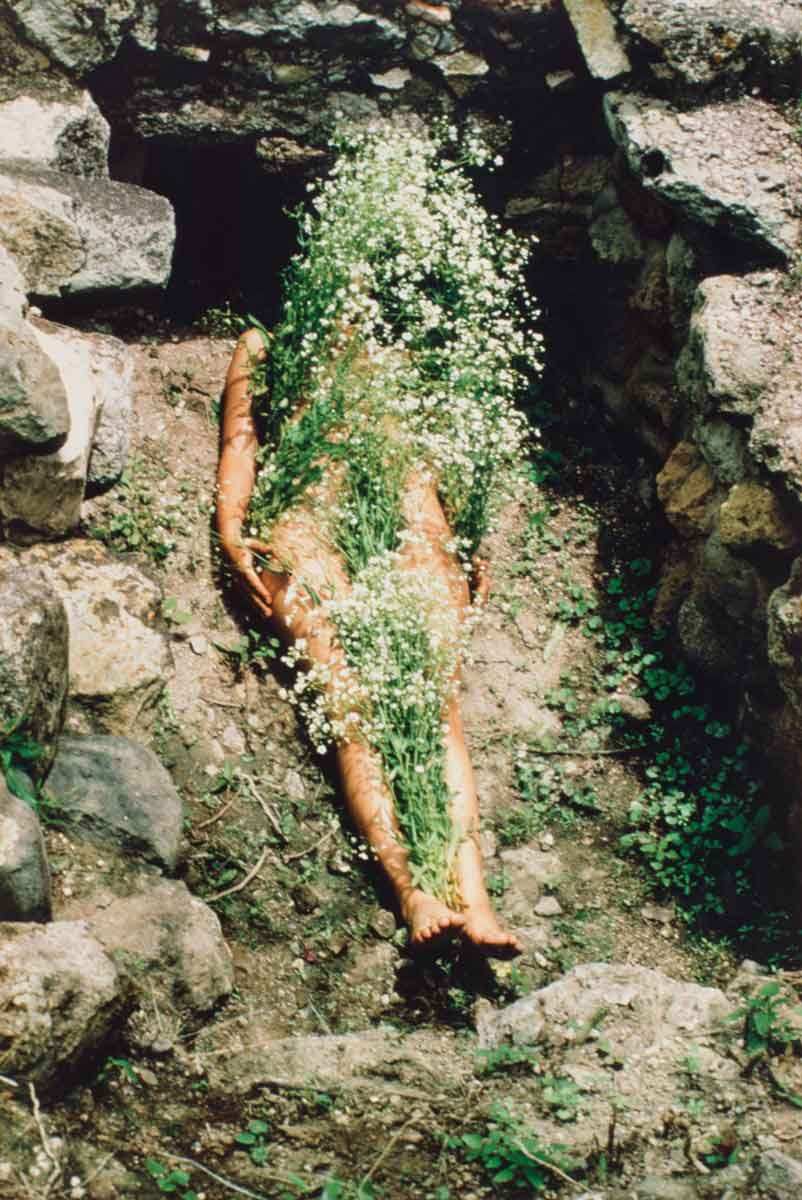
Mendieta has been called a pioneer of ecofeminism, creating distinctly feminine environmental works. Like other artists working with land art such as Robert Smithson and Walter De Maria, Mendieta uses natural elements as tools. What sets her apart is her use of the human body which makes a connection between the Earth and the female figure.
In Mendieta’s own words, her art is grounded on the belief in one universal energy which runs through everything from insect to man, from man to spectre, from spectre to plant, from plant to galaxy. She also called her art a way to return to the maternal source.
While many other feminist artists of the time were concerned with ideas connected to civilization and society, like Agnes Denes or Mierle Laderman Ukeles, Mendieta moved her work to the rural landscape. She created works in the USA, Mexico, Cuba, and Italy. It was always done in nature with some help from a photographer. It is this radical transformation of feminist art that formed the basis of Mendieta’s ecofeminism, making her an icon of environmental art.
Early Fame and Recognition
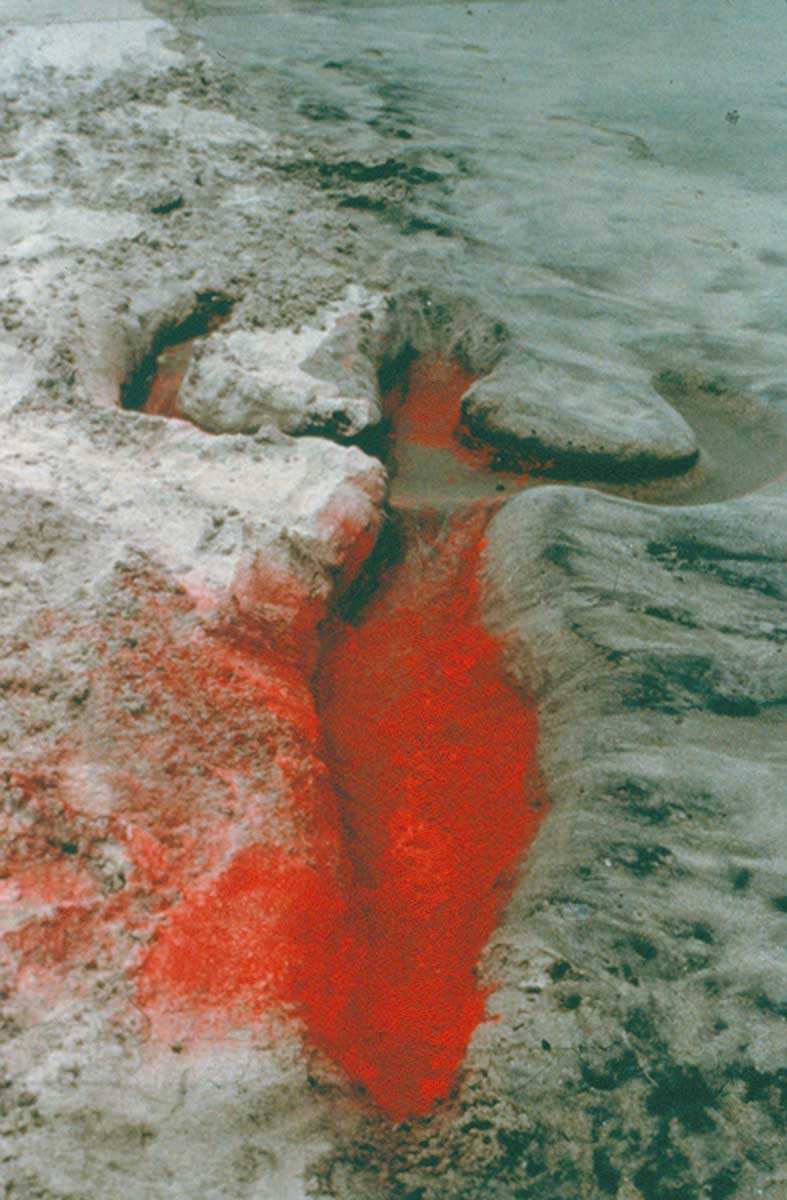
Mendieta moved to New York in 1978 straight after completing her MFA studies. Admiration in the artist community came rather quickly and a year later she had her first solo show at the A.I.R. Gallery in New York. Nereida Garci-Ferraz, who made the documentary Ana Mendieta: Fuego de Tierra together with Kate Horsefield, said of their first encounter: I had never seen work like that. Strong. So female. Direct and powerful. Nature, body, and Cuba were all there.
In the early 1980s, Mendieta received numerous grants and she was often invited to exhibit at Cuban government-sponsored exhibitions. This included the John Simon Guggenheim Foundation Fellowship, the National Endowment for the Arts grant, and the Rome Prize.
Returning to Cuba and Escultures Rupestres
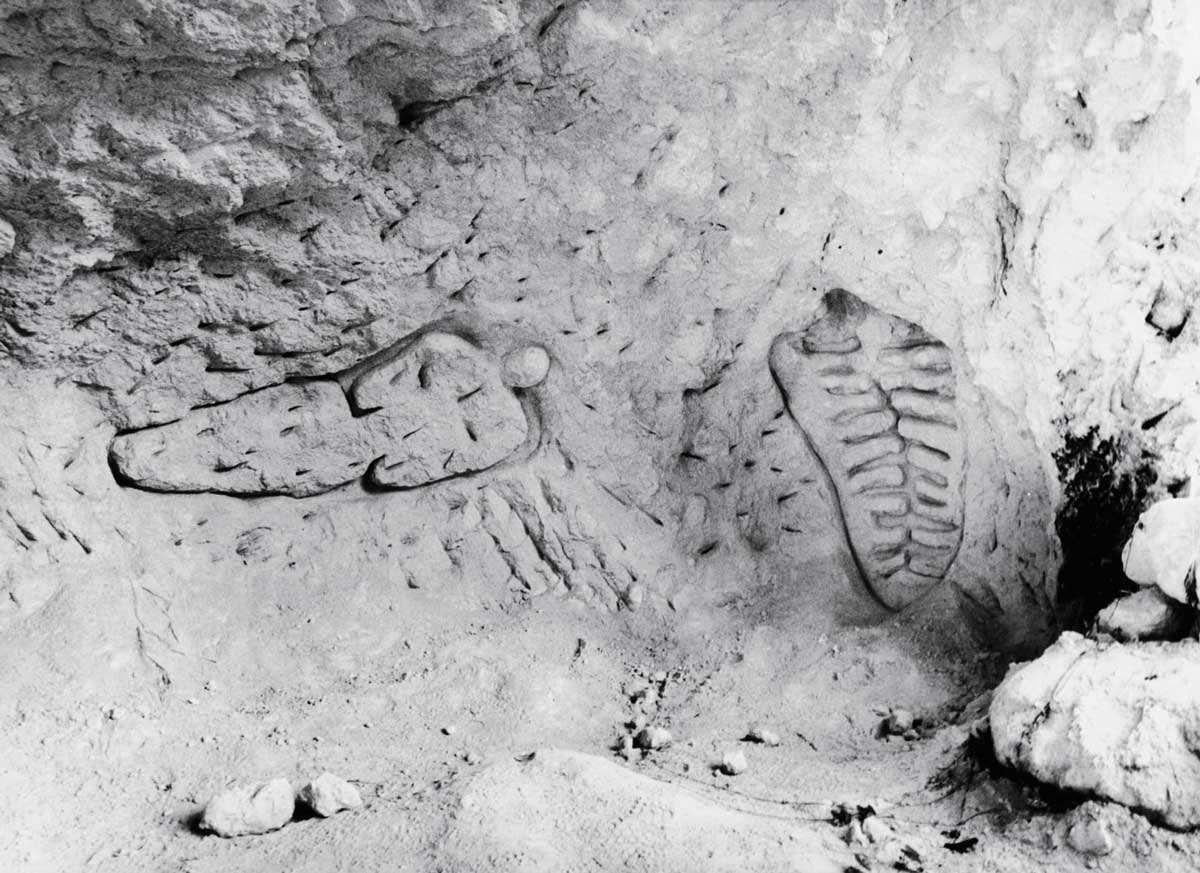
Mendieta longed to come back to Cuba since her childhood. She managed to do it in the early 1980s. After taking trips to her homeland, the artist began to work in a completely new process that expanded the idea of the Silueta series. Escultures Rupestres (Rupestrian Sculptures) were reliefs of abstracted female bodies carved into remote caves in the Cuban countryside.
This 1980s series was inspired by petroglyphs and Taíno, the indigenous people of Cuba. Just as with her Silueta series, she did not exhibit the works themselves but rather the large-scale photographs of the carvings. This brought the site-specific works into a more abstract, unknown realm that was disconnected from its surroundings. To this day, she remains iconic for choosing to exhibit documentation above everything else.
The Tragic Death of Ana Mendieta
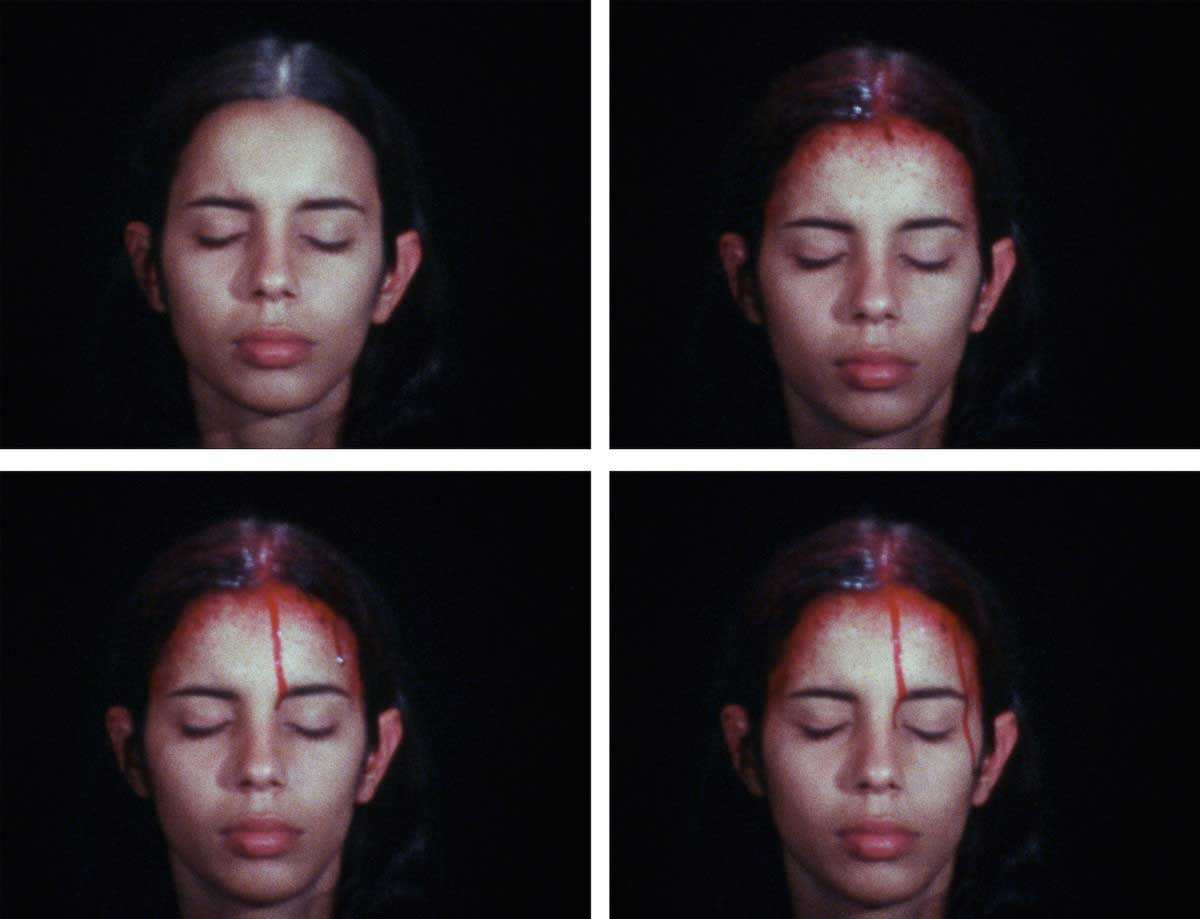
Mendieta’s status as an icon of ecofeminist art also comes from her untimely tragic death in 1985. The circumstances of her death remain unclear. The only witness of it was Carl Andre, who was her husband. Andre was a minimalist artist famous in his own right.
In the early morning, Andre drunkenly called an ambulance saying that Mendieta had somehow gone out the window. They were living on the 34th floor. She was only wearing her underwear and both had been very drunk. The police found Andre in a messy apartment with scratch marks over his face and arms. The doorman had heard a woman screaming No and then the sound of a body hitting the bottom.
Andre was arrested and charged with murder. However, after three indictments, he was acquitted due to insufficient evidence. It was unclear if he had pushed her, but many of Mendieta’s friends and family continue to believe so. Andre said that he did not remember the events and said that her death was a suicide. Mendieta’s friends did not believe this. Mendieta was scared of heights and few believed that she would voluntarily climb on a window sill.
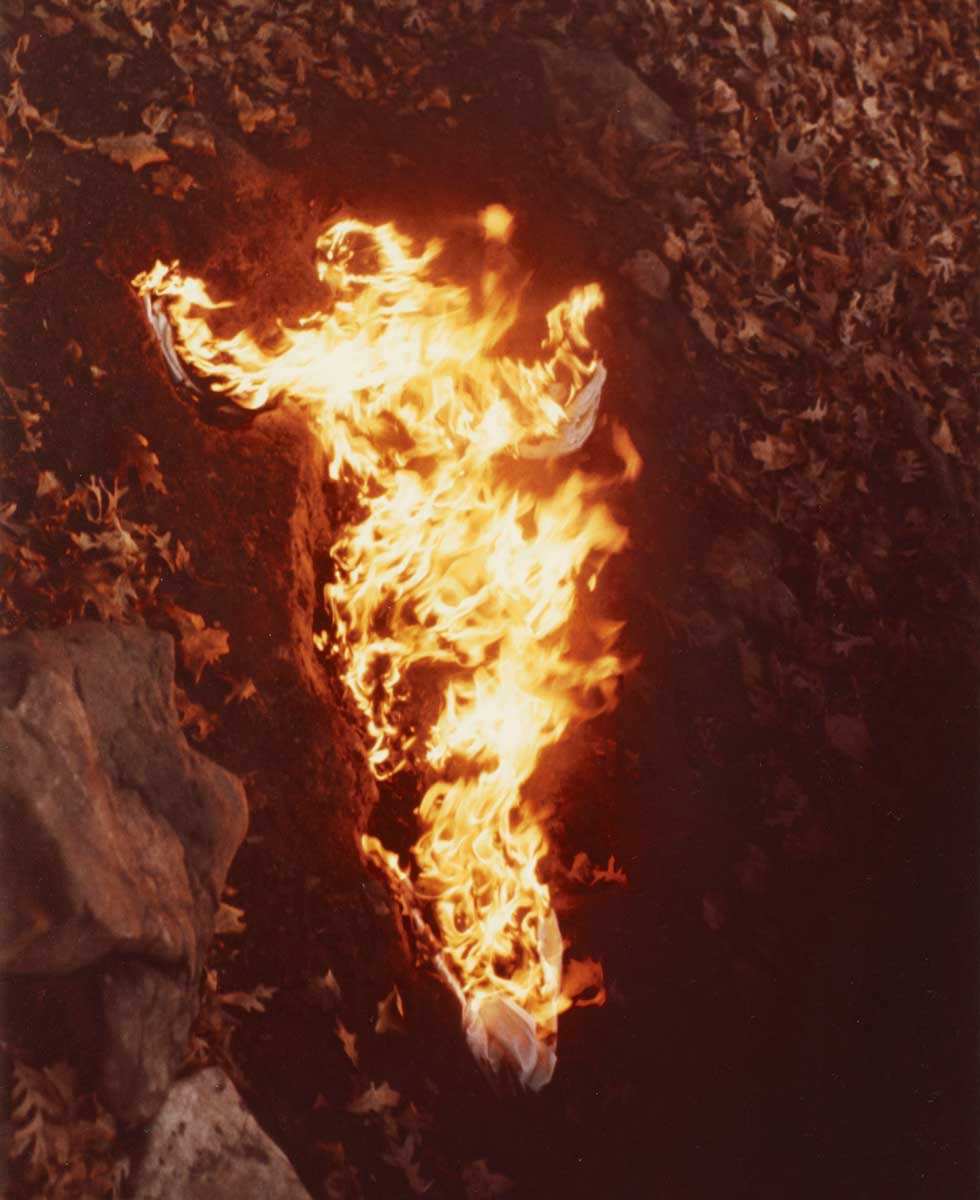
Several retrospectives followed after Mendieta’s untimely death. The first one was at the New Museum in 1987. There was also a traveling retrospective organized by the Hirshhorn Museum and Sculpture Garden of the Smithsonian in 2004. Five years later, Cintas Foundation awarded Mendieta with the Lifetime Achievement Award for pioneering work in performance-based art and land art. Mendieta was incredibly prolific, creating over 100 moving-image works during the 10 years she had been working with film. Her dramatic art and equally dramatic life have earned her fame as a martyr, a pioneer, and an icon of environmental and feminist art.
This post was originally published on this site be sure to check out more of their content.



